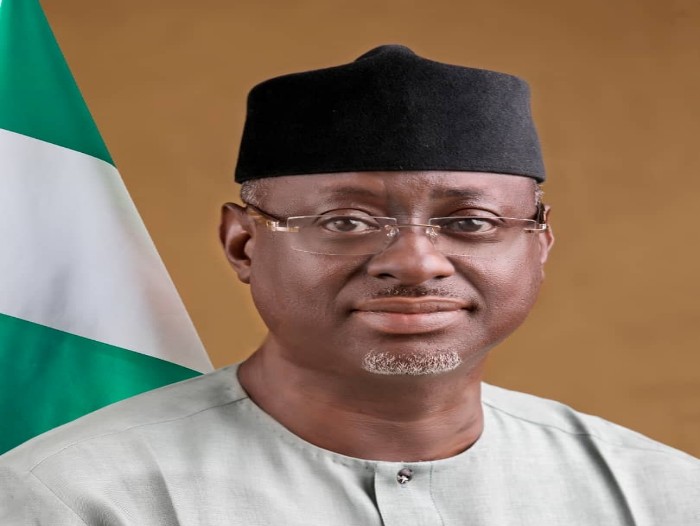The recent escalation and growing frequency and severity of disasters in the form of banditry, boat mishaps, building collapses, and urban and market fires, coupled with hydro-meteorological hazards powered by climate change and climate variability, have ignited the compelling desire to develop Nigeria’s Disaster Risk Management Plan.
The Director General of the National Emergency Management Agency (NEMA), Engr. Mustapha Habib Ahmed stated this during the Stakeholders’ Consultation Workshop on the Development of the National Disaster Risk Reduction Strategy and Action Plan 2023–2030 held in Abuja on Wednesday.
“The compelling demand has therefore led to the commencement of discussions and partnerships between NEMA and the United Nations Development Programme (UNDP) on the actualization of this very important plan, Engr. Ahmed said.
Ahmed further said that the Stakeholders’ Consultation Workshop falls under the Sahel Resilience Project, titled “Strengthening Capacities for Disaster Risk Reduction and Adaptation for Resilience in the Sahel Region: Fostering Risk-Informed Solutions for Sustainable Development’’.
“The project covers the seven countries of the Sahel Region earlier mentioned. The project is also within the context of multi-partnership implementation led by the UNDP in partnership with the African Union Commission (AUC), ECOWAS, UN Women, the Lake Chad Basin Commission, AGHRYMET, and other regional organizations. I want to use this opportunity to express the profound gratitude of the government of the Federal Republic of Nigeria to these international organizations and the government of Sweden that sponsored the project. The project will no doubt strengthen the resilience of Nigeria and the entire Sahel region of West Africa.

“Today’s event becomes even more pertinent in consideration of the high level of vulnerability and fragility of the countries covered by the Sahel Resilience Project within Africa south of the Sahara. It is on record that the high level of vulnerability in these countries is driven by a fragile economy, environmental degradation, extreme weather conditions, a low level of income, insecurity posed by terrorism, and political volatility.
“There is no doubt that working together with multiple development actors under the Sahel Resilience Project will help the countries of the region collectively improve their resilience in consideration of the transboundary nature of disaster events. For us in Nigeria, the Sahel Resilience Project is expected to support the renewed hope agenda of the Federal Government, especially in the areas of poverty eradication, food security, and inclusivity.
The DG further said that he does not doubt that the objectives of the workshop will be achieved with the expertise of the participants drawn from strategic federal ministries, departments, and agencies, as well as the United Nations system led by the UNDP.
“The period of this workshop has coincided with the ongoing evaluation of the 2023 flood season by NEMA and efforts to address recurring boat mishaps, building collapses, and urban and market fires, which have become dominant in Nigeria’s disaster risk profile. Just yesterday, I returned from a consultation visit to the Governors of Adamawa and Taraba States on exploring ways of reducing the rate of occurrence of boat accidents that have resulted in the loss of several lives during the year in riparian communities along the Rivers Benue and Niger.
He further said that management of disaster risks in contemporary times is anchored on preparedness, mitigation, risk reduction, and adaptation, and this can only be realized with the full deployment of a strategic action plan that assigns roles and responsibilities to implement federal government MDAs and other relevant stakeholders.
“Consequently, I urge you, our esteemed stakeholders, to accord this workshop the very serious attention it deserves. We have been working together over the years; let us sustain the momentum to develop a comprehensive document for disaster risk management in Nigeria that will go beyond 2030 and the Sendai Framework regime.
In her opening remarks, UNDP Sahel Resilience Project Manager in Nigeria, Dr. Reshmi Theckethil, said that almost half of Nigeria’s population, or 91 million people, faces multidimensional poverty. Communities are being impacted by environmental and health hazards like droughts, floods, epidemics, and man-made disasters such as oil spills and terrorism. Challenges from rapid population growth, urbanization, and socio-political issues often contribute to conflicts, violence, and increased insecurity.
“Throughout the years, Nigeria has experienced 440 disasters, including several catastrophic floods, leading to tragic loss of life and economic loss. These disasters not only damage property but disrupt crucial infrastructure and increase the risk of diseases like cholera, diarrhea, and malaria. The financial aftermath of floods in 2012 and 2022 is staggering, amounting to billions of dollars and affecting some 12 million people.
She further said, “As a signatory to the Sendai Framework for disaster risk reduction, Nigeria has been working diligently towards achieving its targets. A 2021 UNDP report” shed light on some of the areas that require special attention—improve awareness and understanding of risks, clear regulatory frameworks, strengthened mechanisms for coordination, and stakeholder participation, to name a few.
“Today, our shared objective with NEMA is clear: to develop a new disaster risk reduction strategy for Nigeria. One that is aligned with the African Union’s Programme of Action and regional efforts to strengthen disaster preparedness and response capabilities in West Africa and the Sahel region. The vision is ambitious: to create a resilient, disaster-ready Nigeria.
“And to realize this, during the next two days, we will take the first step towards defining the strategic directions with guiding principles and actionable plans that will lead to coordinated actions for effective disaster preparedness, response, recovery, and risk reduction in the country. But that is not enough.
Dr. Theckethil further reiterated that the new disaster risk reduction strategy for Nigeria must address priorities such as understanding disaster risk, strengthening governance, investing in resilience, and enhancing preparedness. It should promote policy coherence related to sustainable development, poverty eradication, and climate change, aligning with the sustainable development goals and the Paris Agreement.
“A successful disaster risk reduction strategy—with clear goals, targets, indicators, and timeframes—will allow the government and other stakeholders to articulate their intentions and actions in a coherent and coordinated manner to protect the population against current and future disaster risks.
She called upon everyone, including other UN agencies, to join this journey in developing the Strategic Action Plan for the country’s new disaster risk reduction strategy.
“Together, let’s pave the way for a resilient Nigeria where its citizens can realize their aspirations without being derailed by crises.
The event witnessed goodwill messages from the DG National Space Research and Development Agency, Dr. Halilu Ahmed Shaba; the Statistician General of Nigeria, Prince Adeyemi Adeniran; the DG of Nigeria Hydrological Services Agency, Engr. Clement Nze; the DG Nigerian Meteorological Agency, Prof. Mansur Bako Matazu; and the DG National Council on Climate Change (NCCC), Dr. Salisu Dahiru, among others.

